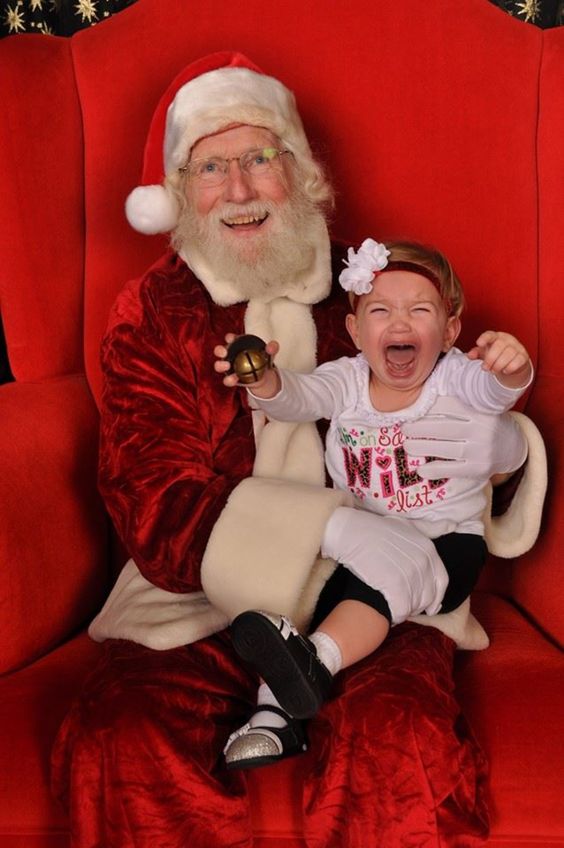
Stranger Anxiety: A Holiday Hazard

Some of my most enduring memories of Christmas with my own children were the annual visits with Santa. Born in the fall and still babes-in-arms by Christmas, their first experiences with Santa were uneventful. Things had changed dramatically, however, by Christmas #2–when the kids were about 15 months old. They would have nothing to do with the jolly old man! I was disappointed but hardly surprised. They were both at that second Christmas at the height of what is called “Stranger Anxiety.”
As I reflect back some 25 years to those early experiences with kids and Santa, it got me thinking again about Stranger Anxiety as a developmental phenomenon that kids of any generation go through. It may be easy to deal with Santa by simply avoiding him, but it’s not so easy to deal with the anxiety that arises when new relatives visit during the holidays or when a new caregiver is introduced. To refresh my memory of how to deal with Stranger Anxiety, I got down a copy of the book I co-authored with Dr. Susan Goodwyn, Baby Hearts: A Guide to Giving Your Child an Emotional Head Start, looked the term up in the index and, sure enough, found a list of tips that can help.
Insist that people approach slowly and smoothly. Strangers, no matter how well intentioned, who swoop into a young child’s space end up overwhelming his/her with feelings of vulnerability. Because feeling overwhelmed is the exact opposite of feeling in control, the result is fear.
Provide a prop. Providing the stranger with your child’s favorite toy or an attractive new toy is another helpful ploy because it works to distract the child from the newness of the visitor and defines him or her as having something positive to contribute.
Teach the stranger favorite signs. If your child is using signs from our Baby Signs® Program, as we fervently hope is the case, prepare the stranger ahead of time by teaching him or her a few of your child’s current favorites. We all feel safer with people who share our language!
Enthusiastically introduce the stranger. Get into the habit of introducing people to your child with expressions of sincere delight. This may sound odd if your baby is very young, but even by 4 months babies are sensitive to facial expressions and tone of voice—and by 10 months they are purposefully monitoring these emotional cues to judge what their own reaction should be.
Be patient and understanding! Stranger anxiety is a normal part of development and actually indicates the onset of important advances in intelligence and memory. It means that children are truly thinking about what’s happening, comparing faces with those they remember, and figuring out how to regulate their own emotions—in this case by avoiding the stranger. If you can think of Stranger Anxiety as a manifestation of progress in your child’s development, it will be easier to be patient.
Stranger Anxiety is one of the earliest and most universal forms of fear that young children experience. If you’re interested in what some other common fears are and tips for dealing with them, check out Chapter 7 of our book, Baby Hearts, “Monsters and Meanies: Addressing Fear and Anxiety.”

Happy Holidays,
Linda Acredolo, Ph.D.
Co-founder, the Baby Signs® Program
and
Professor Emeritus, UC Davis
Additional Resources
The Development of Stranger Fear in Infancy and Toddlerhood: Normative Development, Individual Differences, Antecedents, and Outcomes: https://www.ncbi.nlm.nih.gov/pmc/articles/PMC4129944/
How to Deal with Stranger Anxiety: https://www.whattoexpect.com/toddler-behavior/toddler-stranger-anxiety.aspx
How to Help Your Child Overcome Stranger Anxiety: 10 Tips: https://psychcentral.com/anxiety/stranger-anxiety
